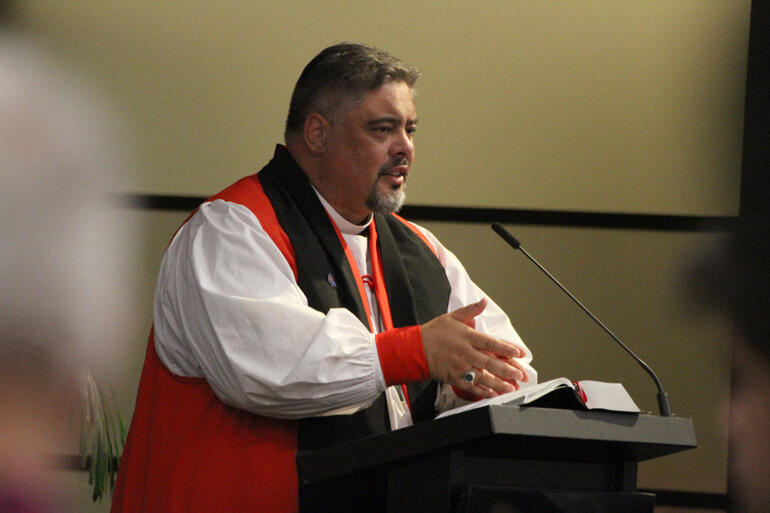

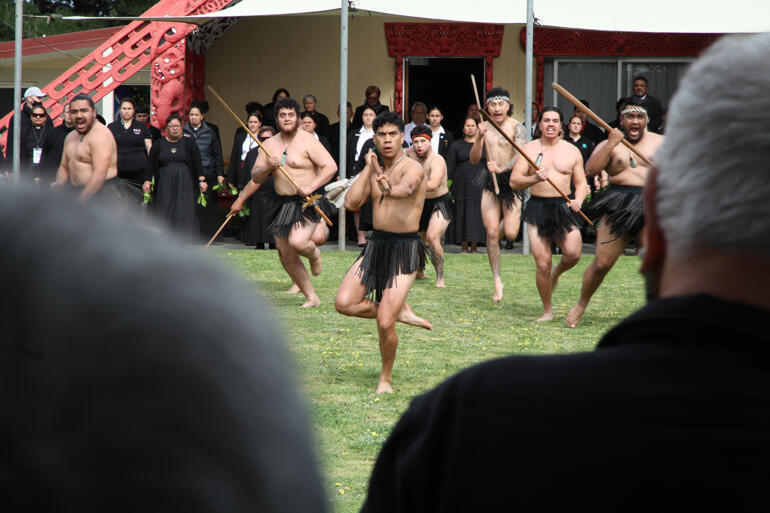

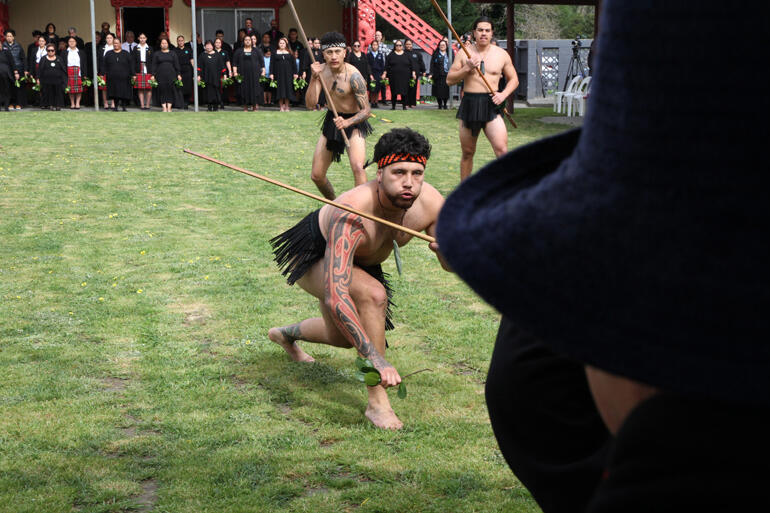

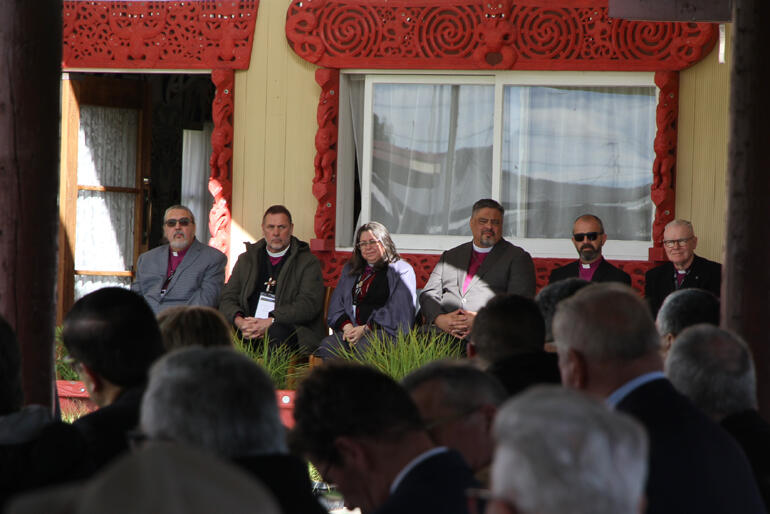

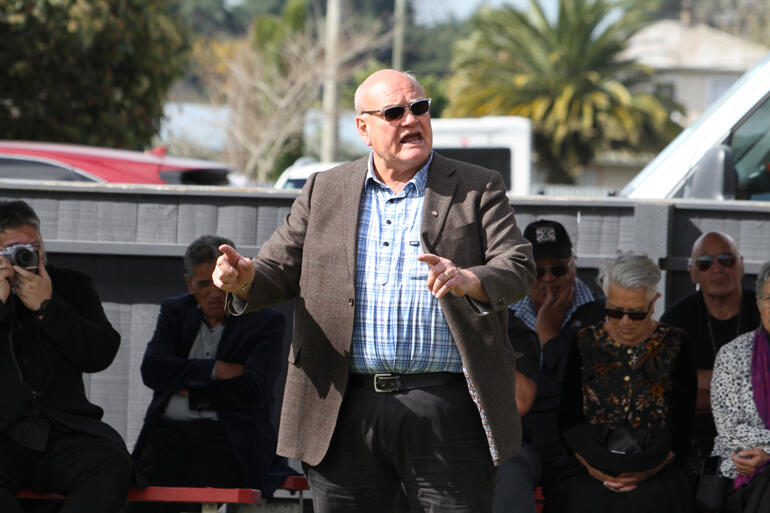
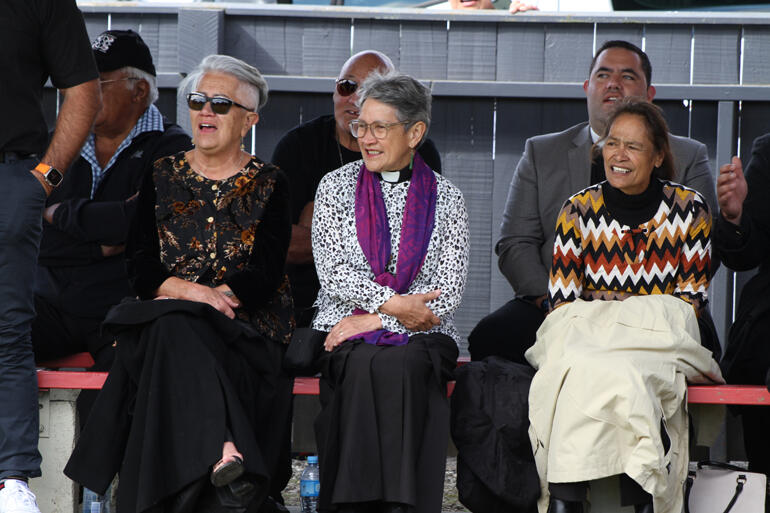

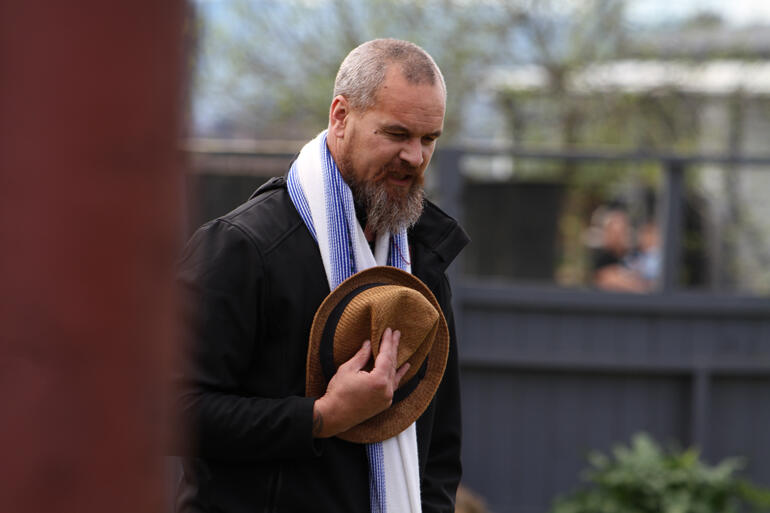

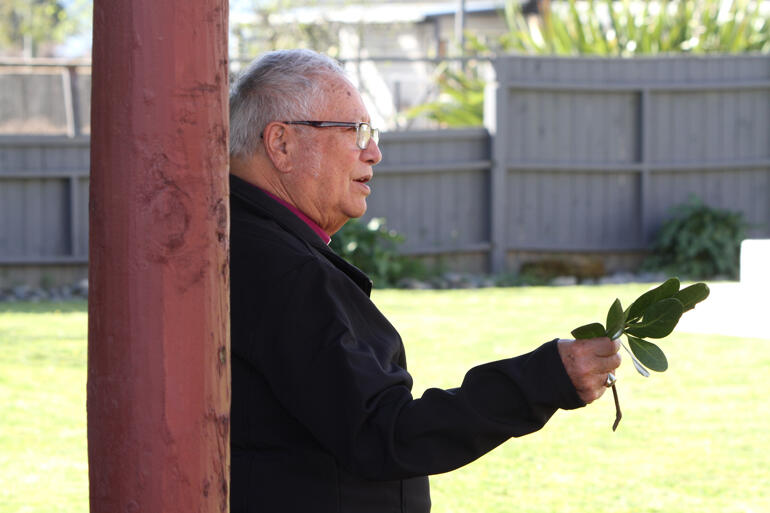
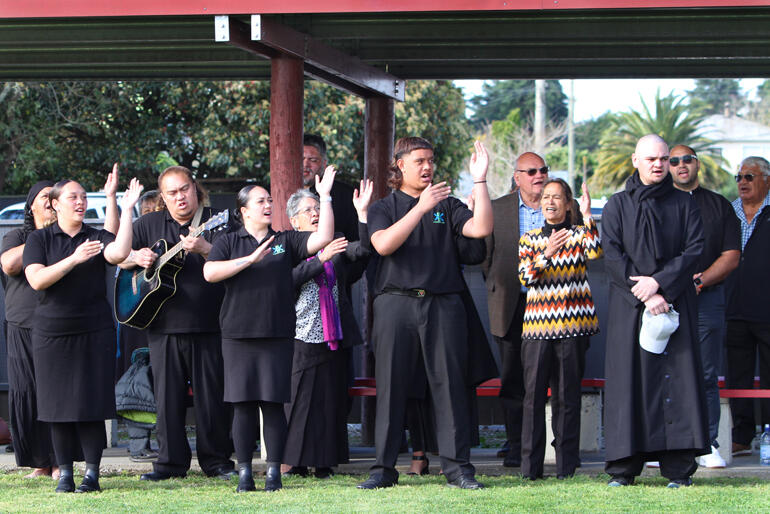
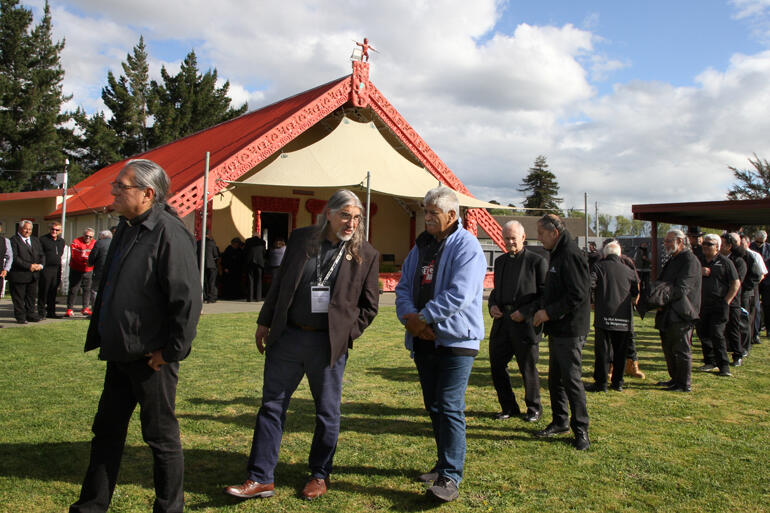
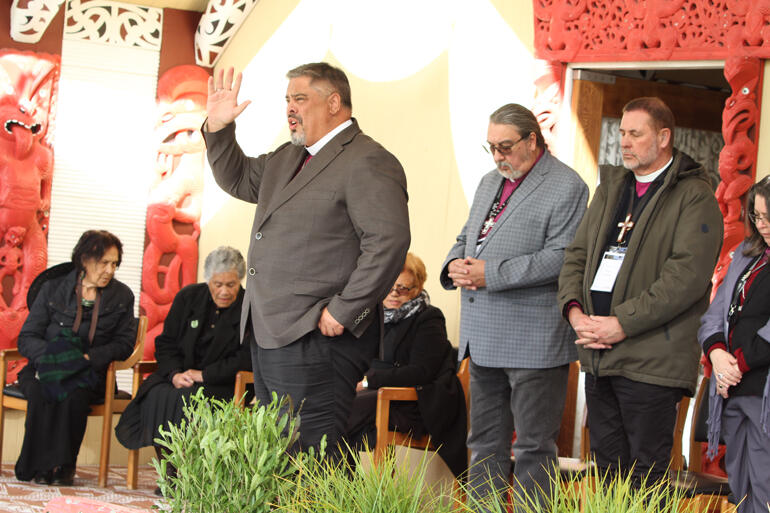

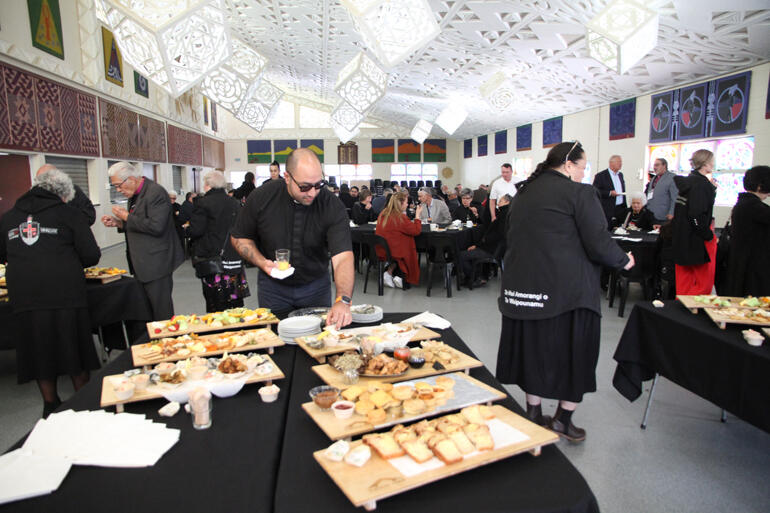
The rains have stopped, and the stopbanks have been repaired, but the stories of Cyclone Gabrielle’s destruction - and the outpouring of awhina and aroha that followed it - continue to be told at Ōmahu Marae.
Manuhiri tūārangi from across Aotearoa were called onto Ōmahu’s ground, for a sun-drenched pōhiri rich with emotion and kauhau at the same marae that had transformed into a distribution hub for food, water, resources, information and community support after Gabrielle’s devastation.
And it was kauhau that was the theme of not just the day’s events, but Archbishop Don Tamihere’s charge later in the evening, as connections were renewed among Māori across the Pīhopatanga o Aotearoa.
From the karanga led by Rev Bettina Maxwell and Rev Vianney Douglas for the guests, through to the whaikōrero and waiata that followed, there was a visceral outpouring of love for the kāinga that had suffered so much, time for reflection, and a chance to reach out to one another in unity.
As Eli Tapene (Upoko o Te Ika) described it, “our hearts are so full already. These few days are about rekindling the relationships with old faces, whānau and friends.”
After kai, guests arrived at Toitoi, the magnificently restored Opera House and municipal buildings in central Hastings, for formal registration, presentation of the late Archbishop Brown Turei’s Bible to accompany Te Rūnanganui and the roll call.
With quorum established, it was time for the evening service, and Archbishop Don’s call to action in the charge.
After acknowledging and welcoming those who had gathered, including primates and their spouses from as far afield as the USA, Canada and Brazil, staying on from the Anglican Indigenous Leadership Initiative, Archbishop Don spoke of kauhau.
Kauhau is often translated as ‘sermon,’ but Archbishop Don reminded Te Rūnanganui that its source is much deeper and lies in traditions of Māori ancestral storytelling.
That’s why when European missionaries came to Aotearoa and shared the Word through stories of the Bible, tāngata whenua quickly resonated with them.
“Our people already had a highly developed storytelling method, using language that wasn’t always literal”, he began.
“Encoded within our stories are layers of nuance and meaning and metaphor, and the potential for understanding. Our stories can act as camouflage for those that aren’t meant to see their meaning, and they can also act as a window onto our ancestors’ thinking.”
Archbishop Don told Te Rūnanganui that whether those first Pākehā missionaries understood it or not, they were telling the stories of the gospel to a nation of storytellers.
“And those kauhau sounded a lot like our own - stories of ancestors, of trials and struggles, stories of humanity and of the divine. Our people were able to set aside who the messenger was, and to pay attention to the message, and soon the Bible had spread like a spiritual tsunami among us.”
Jesus was, of course, proficient at kauhau, he went on.
“He said, ‘I would hope you would not be only the hearers of the word, but doers also.’ What we do is a far more powerful kauhau than what we say.”
He paid tribute to the people of Ōmahu, whose mahi during and following the cyclone was – and is –“the kauhau of bravery, of action and faith, generosity and hospitality and answers to prayer”.
He spoke warmly of Rev Zhane Tahau Whelan, a young priest who had an enormous task in front of him during the emergency at Omahu – “gaining 20 years of parish experience within one week”.
“Within hours, despite being flooded itself, Ōmahu Marae activated, drawing on its supply lines to provide what was needed. And Zhane prayed - he prayed over remains that had been unearthed, over people displaced, he prayed without food and without sleep. That was his kauhau.”
Archbishop Tamihere then acknowledged the Head Girl of Hukarere Girls’ College Zsana Dimitro, who had cared for every student who needed to get home following their evacuation from the flooded school site in Eskdale. They are all, now, living safely at their new boarding hostel in Havelock North. “Thank you Zsana for your kauhau.”
Finally, he asked those gathered one question as they began their four days of discussion, facilitation and business planning.
“What should our kauhau be?
“If you look at the global church, the public has the perception that our kauhau is one of division and long-lasting disagreement. Of who will be included and who will be excluded.
“But Jesus commanded us to love. Love is not just a feeling, but an action. It is kindness, and keeping no record of wrong. Did Jesus ever ask us to ‘like’? No, he commanded us to love.”
Archbishop Don reminded Te Rūnanganui that Jesus pointed out harsh realities to his hearers – warning them that a life lived in love is never all success, but “sometimes, storm and raging floodwaters.”
The people said to Jesus, ‘This is difficult teaching, we can’t hear it, we can’t accept it.’ But they knew there was also nowhere else to go, because only Jesus had the words of life.
“You each have the power to speak life within the relationships around you – to serve, to help, to sacrifice. You can be a kauhau that brings hope, joy, freedom, to those around you.”
“Here, we seek to develop a kauhau of integrity, that the world can see and hear and understand. Those that are able to love will get there.”
Meeting over the next two days Te Rūnanganui will wānanga on flourishing mission, and look into areas for the Haahi’s work on matepōwaiwai (suicide), responses to the Royal Commission and safe church, theological education and ministry in the context of mātauranga Mihinare, episcopal leadership, Te Aute and Hukarere Colleges and the Anglican Indigenous Leadership Initiative.








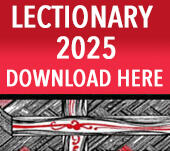








Comments
Log in or create a user account to comment.